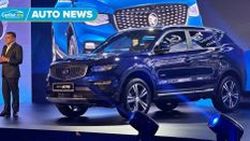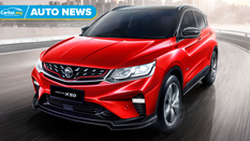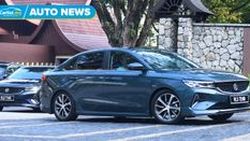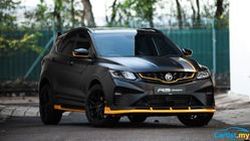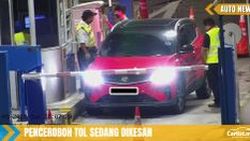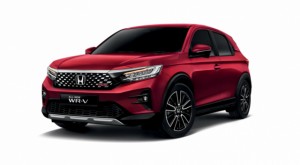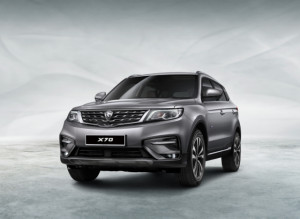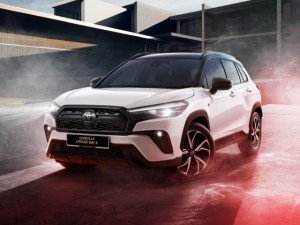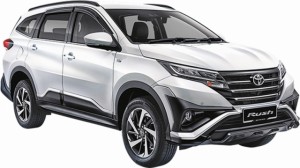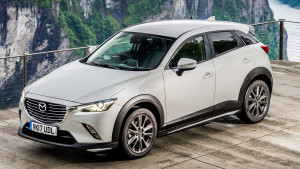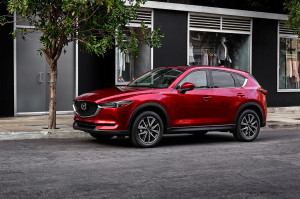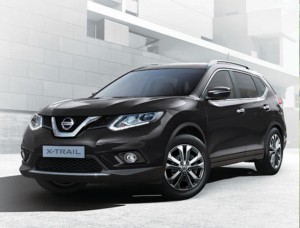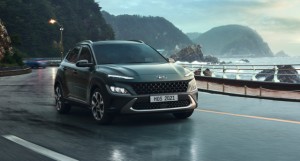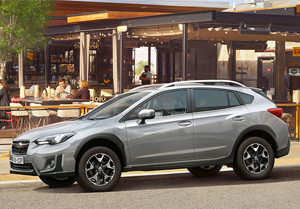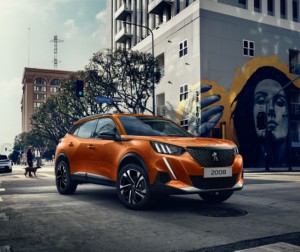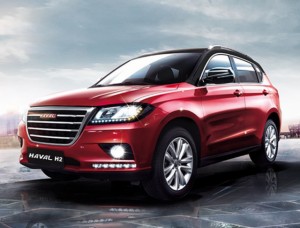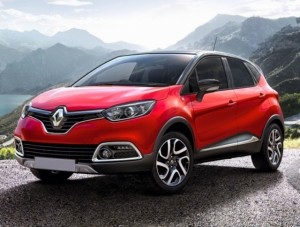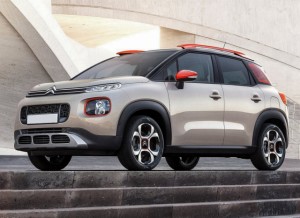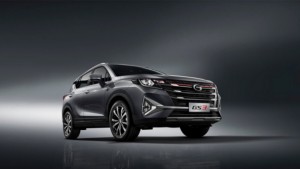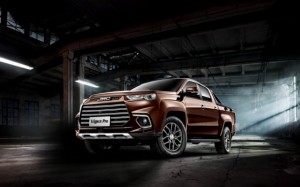Overview
Proton X50 2023 Review
Without a doubt, Proton, especially with the Proton X50 has really turned itself around as a company in the last few years, thanks in no small part to foreign finances and a solid product line-up adapted for our market. Yes, we’ve seen model updates and facelifts and revisions to the cars that Proton sold prior to the X70, but it’s their newer cars that are really driving the brand onwards and upwards.
Introducing the Proton X50, slotting in as their entry-level SUV it really has a lot to live up to. Thankfully it delivered, with a waiting list that still stretches almost half a year in many cases. Proton simply can’t keep up with the demand for the X50, and there are plenty of reasons why Malaysians are putting their money down.
The outline is simple: four variants, two engine choices, with active safety systems on the 1.5 TGDI Flagship variant. Specifications and features vary naturally as you progress through the price range, but even the base model X50 is nothing to sniff at. Let’s dive into it.
Proton X50 Specifications
When it comes to buying a Proton X50, the Flagship variant is the only one that gets the 1.5 TGDI powerplant. It’s a petrol-powered, turbocharged and direct-injection three-cylinder engine, sending power to the front wheels exclusively via a seven-speed dual-clutch transmission. Outputs for the Flagship Proton X50 are a healthy 177 PS and 255 Nm of torque from as low as 1,500 rpm – making it quicker than plenty of cars on the market, easily outrunning its rivals.
That’s not to say that you’re necessarily short-changed with the other X50 engine variant on offer, which is similar in design save for the direct injection system. For reasons that are too technical to explain here, this engine makes a little less power and torque, with 150 PS and 226 Nm respectively. Much like the Flagship model, the other variants are front-wheel drive as well and use the same seven-speed dual-clutch transmission.
Coming down the overall dimensions of the Proton X50, you have a reasonably sized wheelbase at 2,600 mm, sitting inside an overall length of 4,330 mm. In our opinion, it is the perfect size for our market – big enough to be regarded as a compact SUV and offer practical space, but small enough to be fit for the urban dweller. With a kerb weight below the 1,400-kilogram mark, the Proton X50 isn’t too hefty either.
Exterior Proton X50 2023
There’s something alluring about the design of the Proton X50 – it’s all edges on the outside, and yet it still manages to look sleek and cohesive no matter which angle you look at it from. The front grille grabs your attention immediately, with its red accents flanking the Thundercats variant of the Proton logo. The headlights of the Proton X50 blend into this fascia, stretching edge to edge and sitting above an angular front bumper.
From the side, the X50 has relatively short overhangs that keep it looking tight and wrapped around a functional package. The window-to-body ratio leans in favour of the latter, though the blacking out of the B-pillar and window frame surrounds as well as the C-pillar all provide some visual trickery for a more favourable ratio. Black cladding along the side sills and wheel arches emphasize the higher ride height of the Proton X50, though also allowing it to get away with not being quite so high riding in order to achieve the SUV look.
As is all the rage these days, the top-spec X50 1.5 TGDI Flagship model is only available with a blacked-out roof and side mirrors for proper two-tone treatment. It’s an easy way to differentiate it immediately from the rest of the range and adds a touch of sportiness.
Interior Proton X50 2023
The inside of a Proton X50 is a great place to be, whether you’re sitting up front or stretching out in the back. With the exception of the 1.5T Standard, all steering wheels in the X50 are wrapped in leather. The lower two variants get a traditional meter cluster, while the 1.5T Premium and 1.5TGDI Flagship provide a full-colour LCD screen.
Similar to the steering wheel, the Proton X50 1.5T Standard gets a fabric interior for the seat materials, while other variants get leatherette. Similar to the cluster differences in the bottom two and top two variants, automatic air conditioning is only provided with the 1.5T Premium and 1.5TGDI Flagship X50 variants.
Go all the way for the top-spec variant and you also get a panoramic sunroof, which really complements the rest of the Proton X50’s interior. Buyers will already be getting a vehicle that feels reasonably roomy for its class, and the extra light being let in just adds a sense of airiness and brightens up your day – provided it isn’t too hot outside.
Proton X50 Safety Features
If you’re looking at a Proton X50 for the safety functionality, you really should be aiming for the 1.5TGDI Flagship. That’s not to say that the rest of the models are lacking – all models get your standard passive systems such as Electronic Stability Control and Traction Control. Only the 1.5T Standard gets just four airbags, while the rest of the variants get six airbags.
Where the X50 1.5TGDI Flagship justifies its asking price is in the sheer number of active safety functions it comes with. Autonomous Emergency Braking, Forward Collision Warning, Adaptive Cruise Control with Stop and Go, Intelligent Cruise Control, Lane Keep Assist, Lane Departure Warning, Blind Spot Information System, and Intelligent High Beam Control are all at your disposal to make your journey as safe as feasibly possible.
It’s also worth noting that no other manufacturer currently offers any safety package that is more comprehensive than this, even if we go all the way up to the thick end of luxury cars. With the sensor package and computational power alone, the Proton X50 could very well be ready for low-level autonomous driving by the time a facelift rolls around.
Pros & Cons: Proton X50
Like its larger sibling, the X70, the Proton X50 is a very complete car in many aspects – though we cannot speak for any potential reliability issues or flaws because that requires long-term ownership. What we can say is that the amount of equipment offered for the money will always be a talking point, even if you aren’t picking the top-of-the-range X50 variant.
Having an interior layout and material choices like the X50 does show that Proton is willing to elevate the ownership experience and show consumers what is possible if the right development and engineering are taken. While Proton also prides itself in the handling prowess of the X50, as they do most of their models, it isn’t necessarily a relevant strength to your run-of-the-mill buyer.
In terms of weaknesses, they can be very difficult to pinpoint. Perhaps the Proton X50 gearbox could be a little more positive with gearshifts, or the fact that the driver-side mirror doesn’t seem to adjust far out enough. In order to find something deal-breaking with the X50, you truly have to nitpick – and by that point, you know it’s a car that’s definitely worth considering even for minor flaws or failing to meet preferences.
Proton X50 Price in Malaysia
While there were hopes that all variants would slide in below the RM 100,000 mark, unfortunately, if you’re looking for the X50 1.5TGDI Flagship variant be prepared to pay RM 103,000. Just below that is the 1.5T Premium which goes for RM 93,200, and the 1.5T Executive goes for a slightly lower RM 84,800. If you’re looking to get the Proton X50 for its intrinsic space, comfort, and handling qualities, the 1.5T Standard will do you well for just RM 79,200.
Features of Proton X50 2022-2023
If you’re still looking for X50 features that we haven’t yet listed, it would be in things like the keyless entry and start system, or the remote start functionality of the Proton X50 that can be tricky to figure out, though eventually becomes quite useful on an extremely hot day out. Picking either the Proton X50 1.5T Premium or 1.5TGDI Flagship will also get you six-way power-adjustable driver seats, and a 360 camera system over the standard reverse camera setup.
Proton X50 2022-2023 Fuel Consumption
There is a manufacturer-claimed fuel consumption for the Proton X50 of 6.4-litres per 100 kilometres, which works out to 15.6 kilometres per litre – this of course being for the X50 Flagship variant, and thanks in part to the direct injection system. The other X50 engine variant does slightly poorer, but you have to be realistic with your expectations when it comes to small turbocharged engines: push them hard and you will find them drinking fuel quicker than naturally-aspirated engines.
Exclusive deals for you
Get March Offers from authorized dealers near you!
Key Details
- Body Type: SUV
- Transmission: Automatic
- Engine Capacity: 1477 cc
- Fuel Type: petrol
- Seat Capacity: 5
- Price: RM 86,300 - RM 113,300
Variations
From RM 86,300
From RM 93,300
From RM 101,800
From RM 113,300
Key Details
- Body Type: SUV
- Transmission: Automatic
- Engine Capacity: 1477 cc
- Fuel Type: petrol
- Seat Capacity: 5
- Price: RM 86,300 - RM 113,300
Reviews
-

Arvind
14 Jul 2021
Breaking Down the Proton X50’s Design Features
2020 Proton X50 is simply a rebadging exercise of Geely Binyue/Coolray SUV – in much the same way Proton Wira’s were rebadged Mitsubishi Lancers or the Honda Accord based Proton Perdana of more recent times. There is three guiding principles behind the execution of Proton’s design team during the development of the Proton X50 which are Bold, Daring, and Trendsetting. Elsewhere, the 10.25-inch floating type touchscreen infotainment system immerses the driver with up-to-date connectivity and multimedia functions. An additional visual highlight is the air-conditioning vents on either side of the dashboard – these are meant to look like ‘jet-afterburners’ – as claimed by Proton. These are, however, present on the Binyue model as well.
View full review
User Review of Proton X50
Latest News
Similar cars

Thank you!








